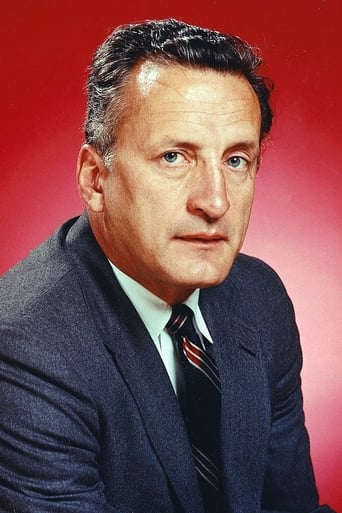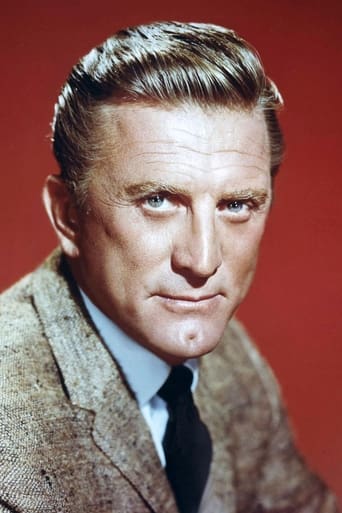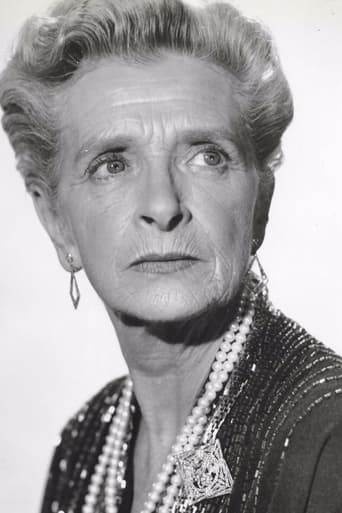Listonixio
Fresh and Exciting
TrueHello
Fun premise, good actors, bad writing. This film seemed to have potential at the beginning but it quickly devolves into a trite action film. Ultimately it's very boring.
Tayyab Torres
Strong acting helps the film overcome an uncertain premise and create characters that hold our attention absolutely.
dglink
Released in 1963, "The List of Adrian Messenger" was marketed with a gimmick; the cast included five top box office stars, who were disguised with heavy makeup, and the audience was challenged to guess who was who. Although the gimmick has faded in the half century since release, the tight, well-directed mystery at the film's core survives.An aristocratic writer named Adrian Messenger gives a typed list of 10 names to his friend, George C. Scott, and, without disclosing why, asks him to investigate whether or not these 10 men are still living at the addresses written beside their names. When Messenger soon perishes in a mysterious plane crash, Scott pursues the investigation and discovers that six of the men on the list have already died accidentally. The film follows Scott as he seeks to determine the connection between the men on the list, their suspicious deaths, and the motive for the apparent serial murders.Well written by Anthony Veiller from a story by Philip MacDonald, the engrossing film treads familiar Agatha Christie territory, but is solid entertainment in its own right. While not among John Huston's most famous films, "The List of Adrian Messenger" is a well directed work, enhanced by an appropriately eerie score by Jerry Goldsmith. Wisely the film was lensed in black and white by Joe MacDonald, which makes the often heavy, and some times obvious, makeup by Bud Westmore more convincing. The five now-legendary stars under the false noses, hair pieces, and rubber faces are Tony Curtis, Kirk Douglas, Burt Lancaster, Robert Mitchum, and Frank Sinatra; a couple are easy to identify behind the make-up, while others more difficult. George C. Scott, however, is the film's star and central character, and he is ably supported by the elegant Dana Wynter, as well as Clive Brook, Gladys Cooper, and Herbert Marshall.Marketing ploys come and go; some fail, others succeed. While "The List of Adrian Messenger" is a quality film that could stand on its own merits, the producers at the time felt the movie needed a boost to stand out at the box-office. Although still fun, the masquerade of five stars is little more than a curiosity and distraction today; however, the underlying mystery is sharp, well crafted, vastly entertaining, and more enduring than the film's advertising campaign.
coolantic
Showing recently on the UK Spike channel, I decided to watch it again, having seen it on TV many years ago. However I could remember very little of the film except the "unmaskings" at the end. Having said that , I still felt cheated by the apparent non-appearance of the Hollywood stars during the picture. And let's be blunt. George C Scott as the lead would hardly be box-office dynamite in 1963! It seems that Huston was indulging in a little joke at our expense. Literally if you'd paid to see the film at the cinema! What we end up with is a curate's egg which is confusing, rather than good, in parts. It plays like a modernised version of those old "Righty-o guvnor" Hollywood portrayals of England, with some of the actors, Scott included, slipping between affected upper-class English accents and trans-Atlantic tones. And that's apart from the French guy who is ,at times,unintelligible! The appearance of several actors in heavy makeup creates a fake fog. The characters played by Tony Curtis and Frank Sinatra do nothing to advance the story and then we have the double double cross where in retrospect it is obvious that the female hunt protester is definitely not Burt Lancaster in drag! Since Kirk Douglas is immediately recognisable upon his first change of disguise it is left to Robert Mitchum to actually contribute meaningfully. John Huston's own cameo also suggests that the whole thing is a bit of a tease. Although Hitchcock inevitably does it much better. In fact there is a tenuous Hitch link. With all this facial makeup, I realised that the actress who played Mrs Slattery was the bearded lady in Saboteur. There were English actors thrown in. Bernard Archard and Herbert Marshall. Although Marshall was Hollywood of course.And did anyone notice Lynch, one of the grooms? He was played by Bernard Fox who was Colonel Gracie in Titanic. I believe Fox went to Hollywood probably in he early sixties and appeared in a number of films. Usually as a comedy villain. The fox-hunting scenes are offensive today. Particularly the one where the fox is being savaged by the hounds. But I would have to agree that the fox hunting was relevant to the plot. In conclusion the film would have been better played straight and with English actors as the leads omitting the big-name guests who, no doubt added considerably to the budget. My wife's opinion? "Complete and utter drivel!"
yelofneb-63037
***may thoroughly accidentally contain spoilers*** This is a very charming movie, whereby it's true charm is revealed at its best at the very end.I recommend it mostly because I believe that fervent movie fans who have not yet seen it will get a big kick out of following it through to the end. It's the kind of movie that English speakers everywhere apart from the U.S. of A. call a lark, a fun exercise for actors, wherever they're from, but an especially great viewing experience because from start to finish, the whole lark is a U.S. of A. breakout into the rest of the English speaking audience terrain. From the director, through the lead actors, to the brilliantly delivered bit parts, it's a crazy splash of fun that has its culmination in a cinematic equivalence of taking a personal bow, whereby the happy grins on each of those actors reveals that it was a pleasure for all of them to take part in a very unique American lark.Btw, the expression "lark" comes from the habit of the western European lark bird to rise high above the nest, whenever it's threatened, in order to lead the assailant astray with shrill crying. hence lark, as an expression to describe dissembling.
jzappa
John Huston displays an indiscreet lack of subtlety, taxing our tolerance with a somewhat modern English whodunit with an extra publicity stunt: Numerous major Hollywood actors are announced to appear in the film, but are all thickly concealed in John Chambers' make-up design: Kirk Douglas, Robert Mitchum, Tony Curtis as an organ-grinder, Burt Lancaster as an old woman, Frank Sinatra as a gypsy horse-trader. Their identities are exposed to the audience at the very end of the film, when each star strips off his masquerade. Actually, only Douglas (by far the most interesting performance) and Mitchum do any real acting beneath their heaps of collodion and crepe hair. The others just walk on to shoot their brief, tacked-on unveilings at a salary of $75,000 each, while being doubled in the film itself. The film even further cheats by often dubbing their voices with that of voice-over actor Paul Frees!The vehicle for this cash-in is a plot wherein the eponymous writer believes a succession of ostensibly isolated "accidental" deaths are really related murders. He asks his friend George C. Scott, just retired from MI5, to help resolve the obscurity, but Messenger's plane is sabotaged while he's on the way to gather data to corroborate his fears and, with his last lungful of air, he struggles to impart to a fellow passenger a crucial clue. What do you know, the passenger just so happens to be the sole survivor and…just so happens to be Scott's old WWII Resistance comrade. They collaborate to probe Messenger's inventory of names, and decipher his puzzling last gasps. Aside from the ones that insult us, more than a few story aspects in the film are akin to The Hound of the Baskervilles, like hounds, the intentions of the killer, the allusions to Canada, and the exposure of the killer using a hoax.While we discover rather soon who the killer is, the obscurity of his intentions and the anticipation of his capture are enough to keep going, even if not gripped by genuine tension or suspense. Burdened with a rasping, implausible plot, maybe this lockstep adventure should've been set in Victorian times to oblige its villain with an infatuation with costumes, its Edwardian-style consulting sleuth in a bowler hat, and its foul play in a misty Thames Path.There is something I quite liked, maybe because it took the edge off, made me relax and enjoy the kitsch. Before the haunting trumpet solos of Chinatown, the strange and threatening cues of Alien or the atmospheric strings of Basic Instinct, a comparatively green-horned Jerry Goldsmith shaped an evocative, and purely '60s-kitsch, ambiance out of an instrumental jumble incorporating saxophone, electric guitar, tuba, harp and the definitive eerie UFO-suggestive electronic whistle that creates nostalgic vibes as when we hear it in The Lost Weekend, Spellbound and BBC's Midsomer Murders.






